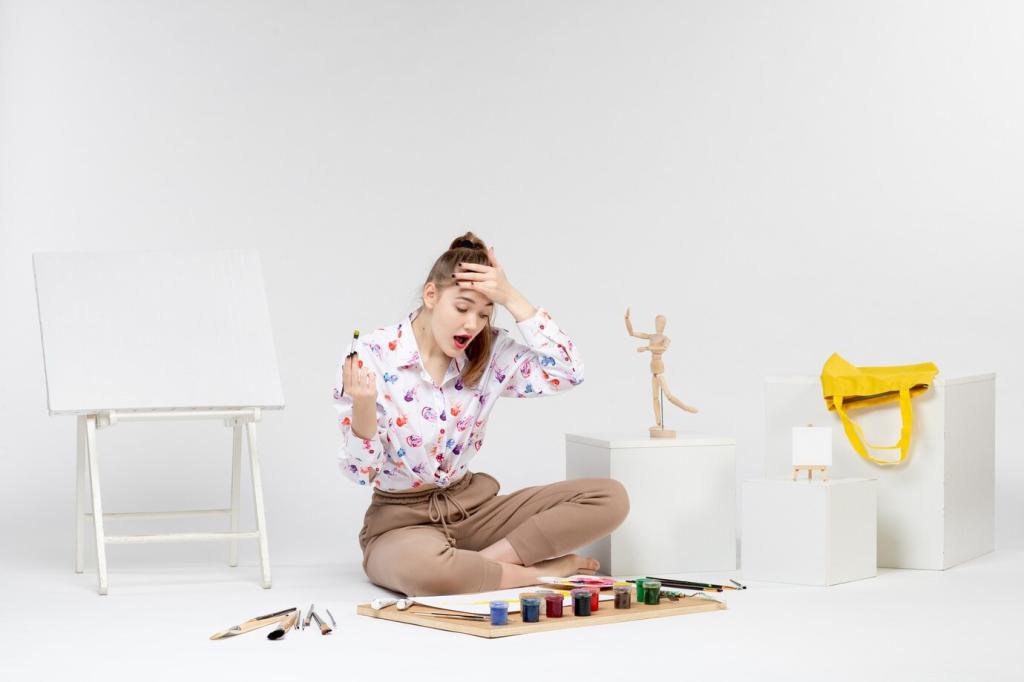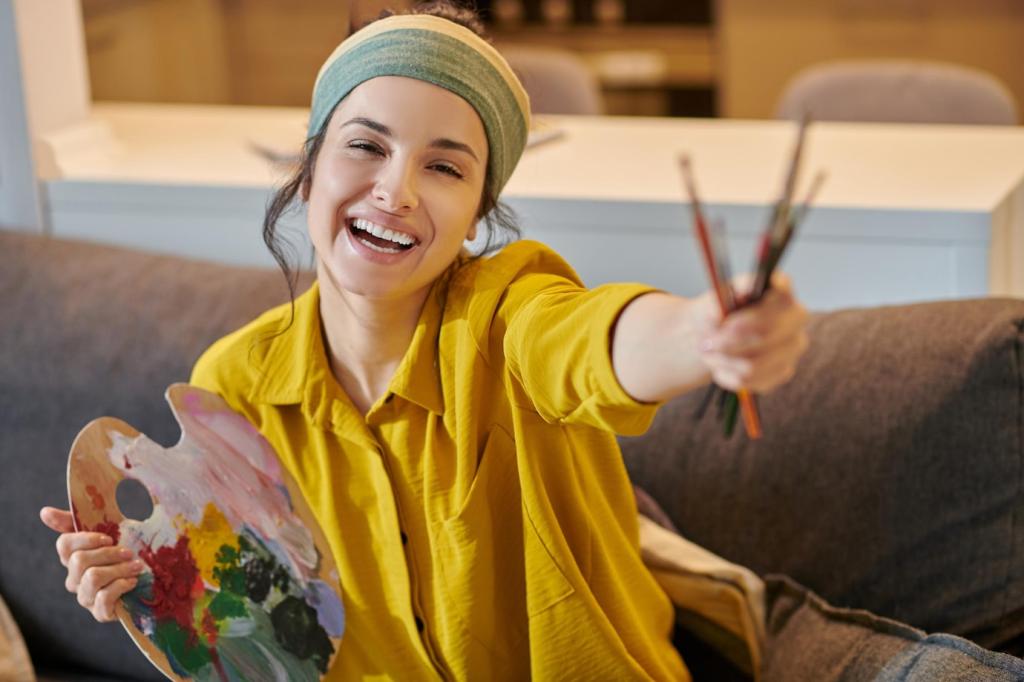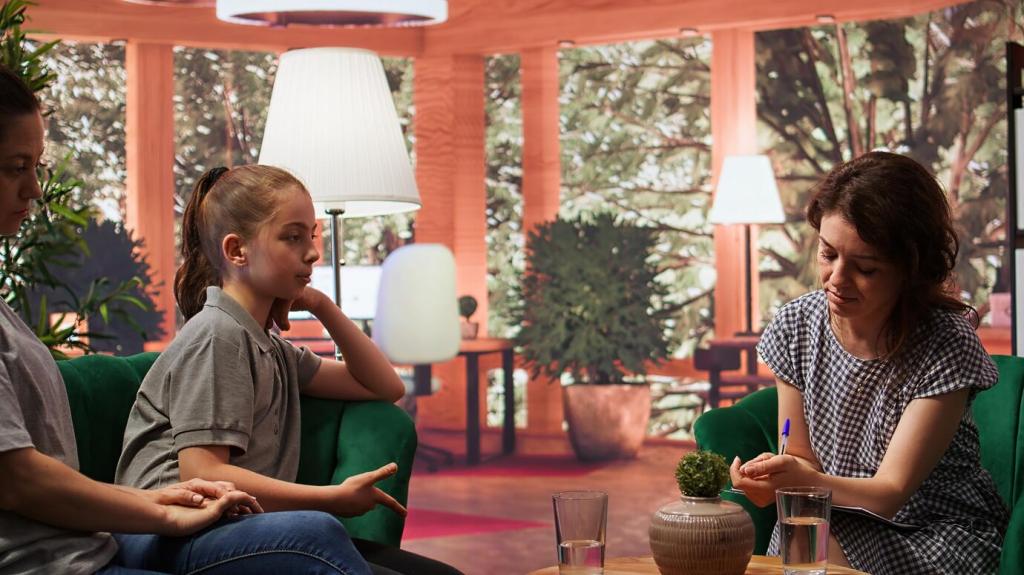
Nature-Inspired Art Therapy Techniques: Create, Ground, Heal
Chosen theme: Nature-Inspired Art Therapy Techniques. Step outside, listen to the wind, and let leaves, stones, light, and water guide your creativity toward steadier emotions, deeper presence, and a kinder dialogue with yourself.
Why Nature Heals Through Art
Biophilia in Brushstrokes
Humans carry an innate pull toward nature, and art turns that pull into practice. Painting with earthy tones or tracing leaf veins slows breathing, lowers stress, and converts fleeting sensations into calm, meaningful images you can return to anytime.
A Quick Story from a Windy Hill
One autumn, a participant arranged a small spiral of acorns and crimson leaves. As the wind lifted edges, she whispered, “I can let go too.” That tiny, wind-kissed mandala became her touchstone whenever anxiety tightened its grip.
Your Turn: Share a Moment of Ease
Recall a time the outdoors softened your mood—a shoreline sketch, a park bench doodle, a sunlit journal page. Share your story in the comments, and invite a friend who might need this gentle, nature-anchored doorway into creativity.

The Windfall Principle
Prioritize what nature freely offers: fallen leaves, seed pods, driftwood, and shed bark. Avoid picking from live plants, gather sparingly, and leave plenty for insects, birds, fungi, and future explorers discovering wonder on the very same trail.

Texture Basket Essentials
Start with a breathable bag, soft brush, and small jars. Collect dry leaves, bark curls, grasses, shells, and smooth stones. Gently clean with a dry brush, label locations, and let materials air out so they stay safe, stable, and pleasantly tactile.

Leaf Rubbings with Mindful Breathing
Place a leaf under paper, then breathe in as you position the crayon, breathe out as veins appear. Count lines, name textures, notice edges. The rhythm anchors attention while the surprise of the image coaxes curiosity back into your chest.
Earth Pigment Watercolors
Collect a teaspoon of uncontaminated soil, dry thoroughly, then grind and mix with gum arabic and water. Test swatches for hue and granulation. Painting with place-based pigment literally roots your story in ground that once held rainfall and light.
Stone Mandalas and Impermanence
Arrange stones by weight, shade, or temperature. Photograph each stage, noticing shifts in emotion as patterns emerge. When you disperse the design, practice letting go—an embodied reminder that beauty can be complete without needing to last forever.
Window-Sill Cyanotypes
Arrange leaves on cyanotype paper, use sunlight or a UV lamp, then rinse to reveal ghostly botanical blues. The slow fade-in feels like watching memories develop, gently teaching patience, attention, and trust in processes you cannot rush.
Soundscapes to Paint By
Play field recordings—rain on tin roofs, dawn birdsong, distant surf—to set tempo and texture. Notice how brushstrokes widen with waves or tighten with drizzle. Share your playlist below so others can paint alongside your favorite sound habitats.
Mini Herbarium Journals
Press leaves between paper, then glue into a notebook with dates, locations, and feelings. Add color swatches that match the plant. Over weeks, these pages become a sensory diary, mapping moods to seasons and the warm patience of time.
Trauma-Sensitive Guidelines for Nature-Based Creating
Choice, Pace, and Boundaries
Offer multiple materials and pathways: drawing, arranging, or simply noticing. Set time limits, define comfortable distances from water or crowds, and check in with body signals. Remember, pausing is progress when the goal is regulation and care.
Sensory Modulation with Natural Inputs
Adjust intensity using temperature, scent, and touch. Smooth stones calm busy hands; pine needles may stimulate alertness; lavender can soften edges. Invite readers to note which sensations soothe them and share strategies others might try gently.
When Weather Mirrors Mood
Match media to sky: rain drawings with watery graphite, sunlit collage with bright paper scraps. Naming the weather out loud can normalize inner storms. Subscribe for printable prompts that translate shifting skies into compassionate creative choices.
Build a Sustainable Practice and Community
Weekly Ritual Framework
Pick a steady time, like Sunday mornings. Five minutes to step outside, five to gather, ten to create, five to reflect. Tiny, repeatable rituals beat heroic bursts, weaving care through ordinary days until calm feels reachable again.

